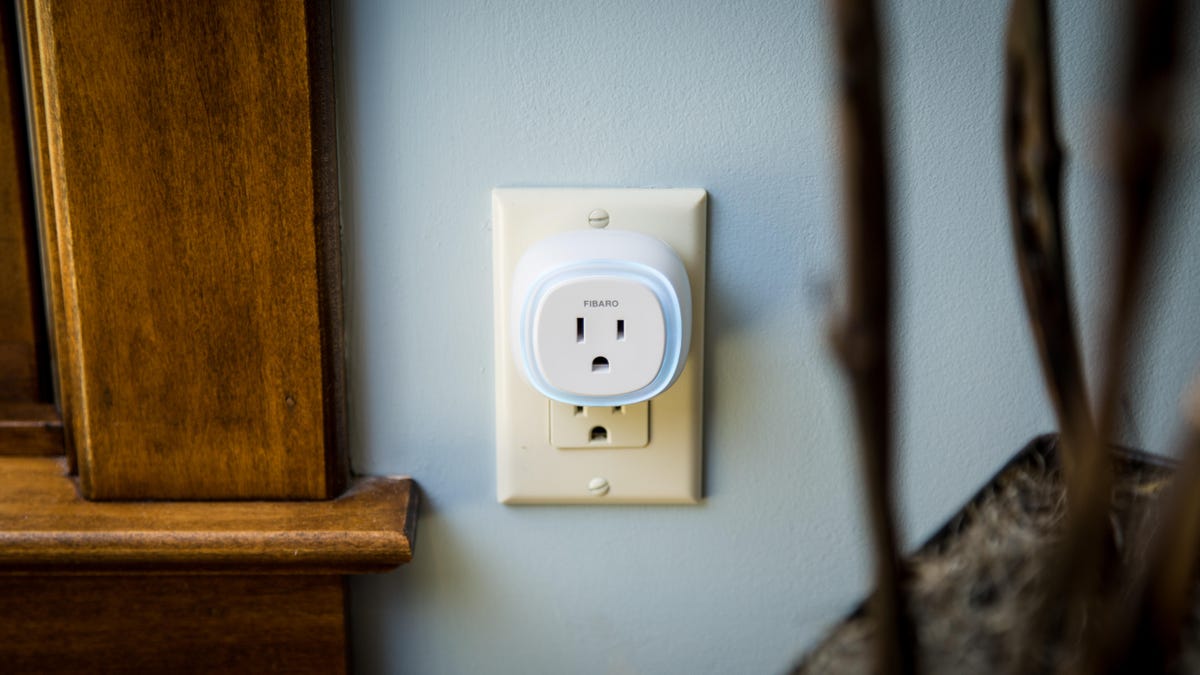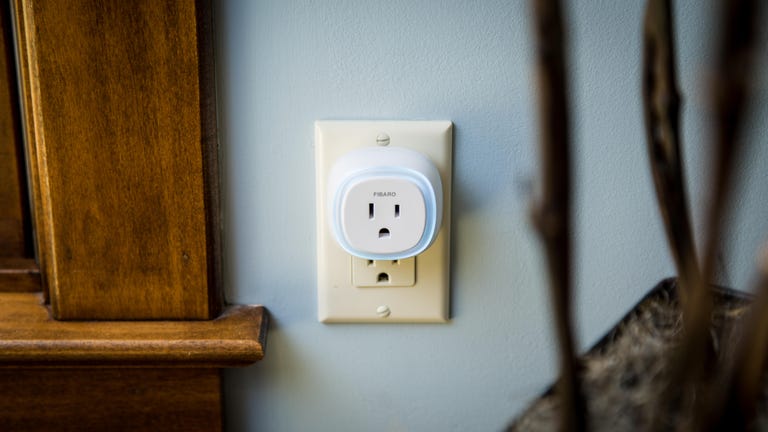 Why You Can Trust CNET
Why You Can Trust CNET Fibaro Wall Plug review: The Fibaro Wall Plug sheds light on power consumption
With power consumption monitoring and a USB charging port, the Fibaro Wall Plug is pricey but practical.
Connected wall plugs are a small, but mighty part of creating a home that feels truly smart. Plugs, outlets and switches are an easy way to add smarts to small appliances and devices without completely replacing them.
The Good
The Bad
The Bottom Line
Fibaro's Wall Plug can do just that and monitor power consumption, too. If you have the Fibaro Home Center, it can even shut things off if they use too much power. At $60, the Fibaro Wall Plug is a pricey, considering plugs from Wemo, TP-Link and others costing nearly half as much. Still, it's worth the money if you're already using the Fibaro system , or want a clear visual indicator of how much power your devices use.

The Fibaro Wall Plug includes a lighted LED ring to indicate power consumption.
Right out of the box, I liked the design of this plug. It might not be for everyone, but I thought the rounded, simple plug shape was attractive. The style doesn't overthink what a plug should look like, and in most cases, it won't block adjacent outlets, either.
What it does do is add an LED light ring around the edge to indicate power consumption level. The lighted ring is color-coded based on how many watts the connected device is using at the moment, and you can use it to monitor and control anything from lamps to a power-hungry refrigerators , really anything that uses a standard power outlet.
For a typical wall charger or lamp, it glows blue, with higher levels of energy depicted by green, yellow, orange, red and finally purple. I tested it out with a phone and computer charger showing blue. When I plugged it in a toaster oven, the plug glowed red.
Fibaro's LED light a different color for each corresponding power consumption level.
Here's a breakdown of how much power is indicated by each color:
- Blue - 70 watts
- Green - 145 watts
- Yellow - 350 watts
- Orange - 750 watts
- Red - 1,350 watts
- Purple - 1,800 watts
I like the idea of a visual indication of how much power I'm using. Of course, if you're not interesting in a constantly glowing plug, you can turn the LED indicator off by pressing and holding the plug's white button for about 3 seconds. You can also reactivate the light this way. Fibaro markets the light ring as both a power indicator and a night light, but it's sensible that you can disable this feature completely if you prefer.
The Fibaro Wall Plug is compatible with all major Z-Wave hubs. I did my testing with the help of a SmartThings hub, which connected to the Fibaro Wall Plug right away. However, it's only when connected to one of Fibaro's Home Center hubs that you get really specific, charted data and options for power consumption available in the Fibaro app.
With the Fibaro system, you can identify which devices are using the most power, set power limits and specify at what power consumption level a device should be powered off. Even the seemingly extra USB port reports its power consumption. If you're not working within the Fibaro system, you'll have a more limited view.
Using the Fibaro mobile application for iOS or Android devices requires a Fibaro Home Center or Home Center Lite hub. Without a Fibaro hub, the Wall Plug becomes a still-capable Z-Wave smart plug with a power level indicator, but you'll get fewer data and management options. With a computer or the Fibaro app, you'll have access to graphs of historical data, even pie charts showing the energy consumption of each connected device, as well as a list of the top five energy consumers in your home. Power monitoring is still an option within the SmartThings app, but you will need a custom device handler to use those advanced settings.
Setting up the plug was simple, though it isn't completely plug and play. In order to connect it to a Z-Wave network, you'll need to find the small white button on the top right of the plug and press it three times rapidly with your hub in pairing mode. Once connected, the light will flash green, then a steady blue until you plug in a device.
When connected via SmartThings, I was able to turn the plug on and off with both Google Assistant and Amazon Alexa voice commands. Within your respective smart home hub's app, you can rename the plug or add a nickname to call it by the device it's powering. The Fibaro Wall Plug isn't Homekit compatible, though, nor does it work with IFTTT for scenes or recipes.
The Fibaro Wall Plug includes a USB charging port.
Fibaro is planning to sell two versions of the Wall Plug, one with a USB charging port and one without. Including a USB port is a simple way to add convenience and capability to smart plugs, and I'm glad to see Fibaro making that effort.
The Fibaro Wall Plug is available in the US for $60 (that converts to roughly £45 or AU$75). The non-USB version should follow later this year priced at $50 (about £35 or AU$65).
The Fibaro Wall Plug is a great addition to the Fibaro Home Center platform and offers a lot if you have access to the Fibaro app, but on its own, the Fibaro Wall Plug isn't as much of a game-changer. Its power-monitoring abilities are diminished if you're using it with any other Z-Wave hub, and the LED light ring is useful only if you can remember the color coding. The Fibaro Wall Plug is a good smart plug with an appealing design, and it can handle powering large appliances with ease. It works with Google Assistant and Alexa, but for less money a plug like the $35 Belkin WeMo Mini offers the same smart-assistant compatibility and doesn't need a hub at all.


